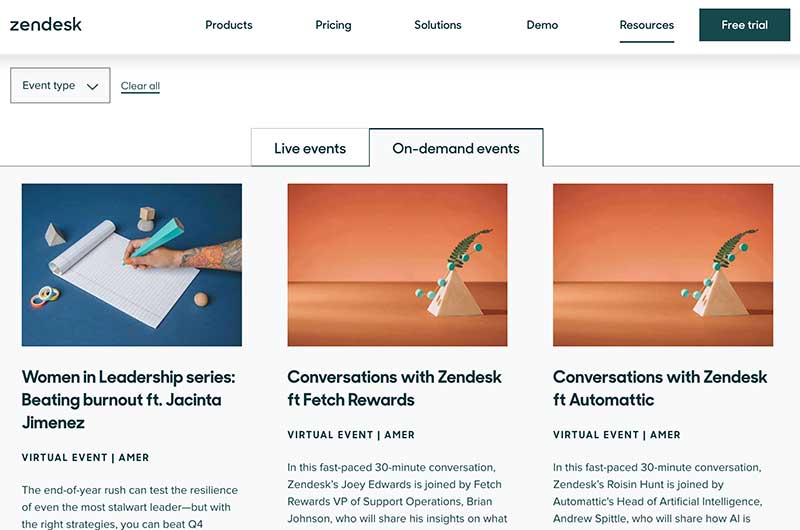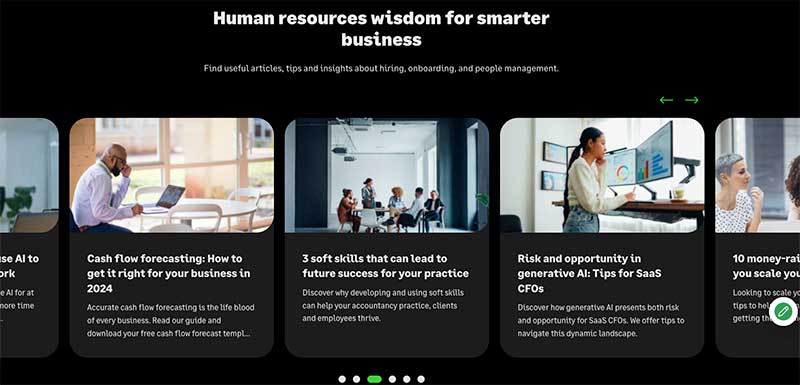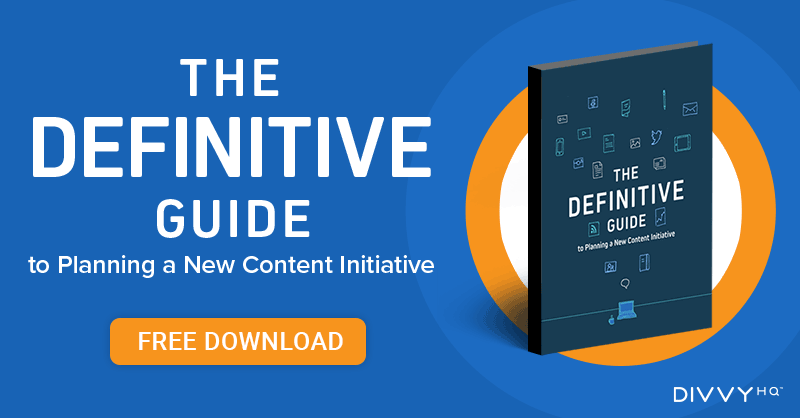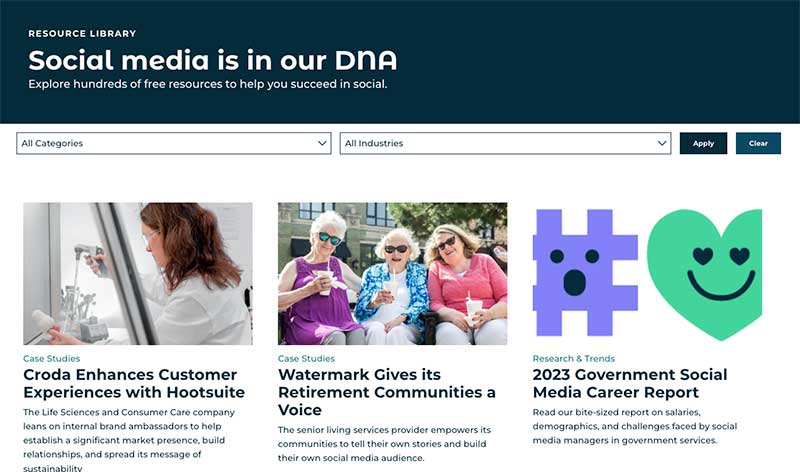Content marketing isn’t just a trend — it’s a $107.5 billion industry poised for growth. Yet, many marketers in various tech industries struggle to see tangible results. Is it a patience issue? Investing in content marketing is certainly playing the long game, at least when compared to digital advertising tactics. CMOs are pushing for leads and new opportunities NOW!
Is it a measurement issue? Connecting the attribution dots between content assets and leads can certainly be a major challenge. So… What gives? Is there a secret weapon?
Yes… If you’re in the tech or SaaS space, a well-crafted content hub, backed by a solid content strategy, can help you overcome many of these challenges.
Besides being a brilliant way to improve your content marketing, building a solid content hub is an effective tool for educating prospects, promoting thought leadership, building trust, and marketing all the unique bells and whistles that your tech solutions provide.
That said, a content hub holds immense value across any industry, as it provides your audience with engaging information and resources. So if you’re looking to build a content hub, read on as we explore what that entails and how to get started.
In This Article:
What is a Content Hub?
A content hub isn’t just a repository; it’s your brand’s digital library designed to position you as an authority in your niche. From blogs to webinars, it’s a one-stop source for valuable, organized content.
In digital marketing, authority is the name of the game. With content hubs, you can position your brand as an authority on a niche topic, using it to aggregate tons of helpful information for your audience.
Some excellent examples of content hubs are blogs, resource libraries, digital magazines, and newsletters. Within these, you might include different types of content, such as articles, videos, webinars, reports, ebooks, or infographics.
You can get creative too—for example, you can see below how Zendesk uses its content hub to share news of upcoming live events and offer in-depth explainers for audiences to watch on-demand.
Source: Zendesk
Benefits of Having a Robust Content Hub
Traditional content archive methods are falling behind the times. Conversely, building and owning a content hub delivers a plethora of marketing benefits.
Improves brand visibility and engagement
Content hubs are gold mines of information tailored for your target audience. By focusing on their informational needs, pain points, and showcasing thought leadership, you not only boost engagement but inspire brand trust and loyalty.
For example, below, you can see how Sage uses resources to explain its HR software solutions and demonstrate HR SaaS expertise.
Source: Sage
By producing content that addresses their customers’ pain points and promotes thought leadership, Sage encourages engagement with its brand and boosts visibility as customers find answers on their site. Ultimately cementing customer confidence in their HR products and services.
Omnichannel content delivery
An omnichannel approach ensures consistency across all platforms, amplifying your reach and enhancing the user experience for your customers.
The primary advantage is that your audience can consume content on their platform of choice. Maintaining consistency across each platform will improve your brand identity while exposing you to potential new audiences.
You can see in the example below how Canva carries its online content onto its mobile site. Don’t forget about design responsiveness when sharing resources across different platforms. Everything must display correctly on different screens to maintain a consistent, positive user experience on every channel.
Source: Canva Learn
Improves lead generation and sales
A recent survey showed that 61% of marketers cite traffic and lead generation as their top challenges. A content hub isn’t just an information center; it’s a community builder and a demand generation engine.
You can foster a community and encourage meaningful on-brand interactions. Including case studies and testimonials in your content hub is a particularly effective way of doing this.
Telling stories is a brilliant and engaging way to build community, drive sales, and promote trust. Nearly 50% of SaaS companies say case studies drive sales, citing it as the most effective marketing tactic to increase sales.
It’s worth gathering testimonials from satisfied customers and using them to create engaging content, such as quotes, mixed media, and other visuals.
Below you can see how Sage uses video to show how entrepreneurs and business owners have successfully implemented their cloud-based small business accounting software to monitor finances, automate routine processes, and scale sales.
Source: Sage
Simplifies integrations, tracking, and measurement
Integrate your hub with your existing tech stack to get insightful metrics. It’s a cost-effective alternative to traditional outbound marketing channels.
Increasingly, marketing decisions are data-driven. A content hub comes equipped with functionality for tracking user behavior. You can track engagement metrics such as bounce rates, devices, watch time, downloads, and more.
You can then use these insights to optimize your content strategy and make tweaks that increase your ROI.
Reduces marketing expenses
As a marketer, you always have one eye on the bottom line. You want to increase ROI, or at the very least, spend less to get the same results.
Content hubs are far more cost-effective than traditional outbound marketing such as print, digital ads, PR, and direct mail.
They enable you to achieve sustained results without needing constant ad spend. Just make sure you consistently update it with evergreen content that continues to provide value.
How to Build a Content Hub
Now that you know the myriad benefits of a content hub, creating one should be top on your content marketing priority list. Here are your top-line to-dos to get it done.
Define your content hub strategy
The last thing you want to do is have another mechanism for throwing spaghetti at the wall. So it’s vital to define your content hub’s strategy before building anything. Start by answering (and documenting) these key questions:
- What is the primary purpose for the content hub?
- Who are the primary audiences we’re targeting?
- What types of content do we plan to include?
- Who will be producing content for our hub?
- How often will we publish content for our hub?
- Which platforms will we use for publishing, distribution, and promotion?
- What tracking and reporting mechanisms are needed?
- How will we know when the content hub is a success? What does success look like?
If you need some additional help developing your content hub strategy, DivvyHQ has a super-helpful ebook (and strategy worksheet) that walks through the above questions and more in detail.
Choose your tech
As part of your strategy development, it’s often helpful to put your martech hat on and determine how you will build your content hub. There are a variety of options in this arena with many of them either utilizing your existing tech stack, or you can engage a stand-alone platform vendor that specializes in delivering off-the-shelf hubs. Here are a few options to consider:
- Build a content hub within your existing CMS – with a flexible CMS (ex: WordPress, Drupal, etc.), you can build out your own resources area without having to learn a new system
- Leverage a DAM or Sales Enablement platform – Many of these platforms offer ways to create public-facing hubs of specific content assets
- Use a dedicated content hub platform – platforms like Uberflip and Hubspot offer out-of-the-box content hubs that can be created, branded, and published in a matter of days.
There are certainly pros and cons to each of these scenarios, and marketers will need to determine how much technical investment is available to throw at this initiative. You don’t want to bite off more than you can chew, and if you’re like most, getting IT involved is often a non-starter.
Define your hub taxonomies
With your strategy and tech nailed down, it’s time to put some thought into how your content hub will be organized. Organize your material into well-defined categories that align with your audience’s interests, pain points, and desired content formats.
This categorization exercise will often influence your hub’s navigation, and the overall usability of the experience. So it’s important to think this through. Will your audience prefer to find content resources by topic? Or are they looking for a certain format of content? Or both?
Categorizing and tagging resources with both topics, formats, and keywords in mind makes it easier for readers to find what they’re looking for and get excited about what you have to say.
Start keyword research to identify target topics
Audiences looking for information in your repository will search online with specific keywords. As such, before you build your content hub, you should do your homework and get a topic list started.
Identify high-impact keywords to guide your content ideation and creation. Tools like Google Keyword Planner, SEMrush, or Ahrefs can help you find the sweet spot between search volume and competition.
Figure out which terms and topics fit well with your brand — for example, product solutions and industry trends.
Design your hub, focusing on providing the best user experience
Design matters. Ensure your hub is visually appealing, mobile-responsive, and user-friendly. Simplify navigation and maintain a consistent visual identity.
It’s always best to use a clean layout, intuitive menus, and a consistent color scheme to create a cohesive and professional look. As you design the hub, keep the user journey in mind, considering different navigation options and functions to make the experience much smoother.
For example, Hootsuite’s resource hub consists of hundreds of free resources that audiences can browse. To make it easier for users to sift through the library, the layout is clean and straightforward and they offer filter options to simplify the search process.
Source: Hootsuite
Optimize for SEO
Implement search engine optimization (SEO) best practices throughout the content hub. Beyond meta tags and descriptions, optimize your URL structures and improve asset load speed for better search engine performance.
In addition, create a URL structure that reflects the content categories and hierarchy, making it easier for search engines to index your pages.
Publish and analyze
Here’s where you get to share your content with your target audience. Make sure you’re publishing valuable content that’s informative, easy to read, and original.
Variety is the spice of life — and that applies to content too. Your resource hub should house various formats, including blog articles, videos, podcasts, downloadable guides, and even interactive tools.
Be consistent. Create a content calendar to schedule and manage your content production and distribution. This makes updating the content hub with new, unique information easier.
Once your hub is live, monitor its performance metrics to continuously improve its impact. By the way, if you need any help in the content calendar and performance metrics department, you should give DivvyHQ a look.
Redefine Your Marketing With a Content Hub
Often, marketers leave content scattered across different channels and formats. While that has advantages, there are better ways to implement a content marketing strategy.
A content hub is a one-stop shop for all the information your visitors need. Use smart keyword research, organized SEO, and a thoughtful layout to make it a breeze for them to find what they’re after.
A content hub is more than just a content repository; it’s a powerful tool to streamline your marketing efforts, build community, and increase ROI.
Done right, it could be your brand’s most valuable asset for lead generation.
For more great tips, tricks, and how-tos, subscribe to the DivvyHQ blog today!






